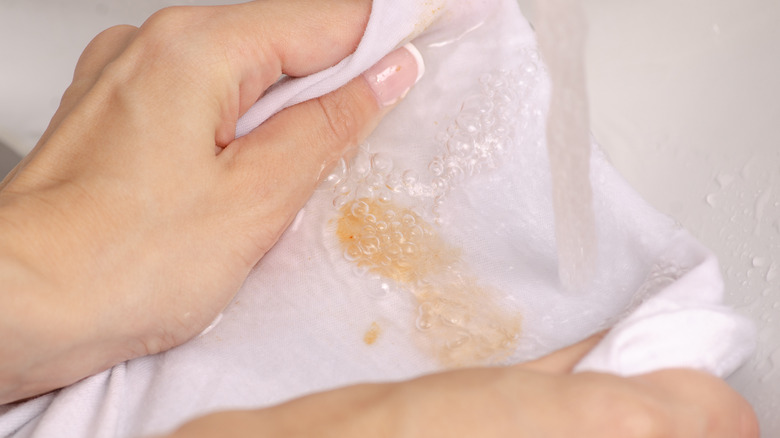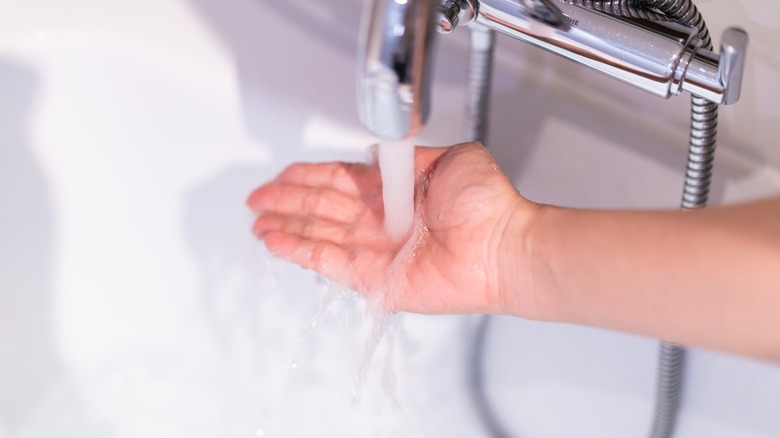Does Water Temperature Really Matter In Removing Stains?
It might be shocking to learn hotter water does not equal better stain removal. In fact, for some types of stains, the exact opposite is true. While this myth does have a tiny bit of logic behind it — as hot water will dissolve a category of stains — most of the time, it'll do more harm than good, allowing the stain to grip the fibers deep in the clothing item. Before working on a stain, don't confuse the guide to laundry water temperatures with the rules for removing certain stains, either. While, in general, you should wash your whites and bedding in hot water, with colors and delicate items washed in cold water, this doesn't apply to stain removal. To determine which water temperature you should use, you'll have to consider the composition of the stain.
Rinsing is the first — and the most important step — in stain removal, rivaled only by timeliness. Like forgetting about a stain and allowing it to seep in, the wrong water temperature might as well invite the stain to live on your garment forever. While this may sound frightening to some, dealing with a stain you aren't sure requires hot or cold water, you can slow time by soaking it in lukewarm water to keep it from setting. In the meantime, look up how to treat the specific stain and follow the next steps — removing your garment from the water and rinsing it at the appropriate temperature to begin extracting it.
Which stains need hot water, and which need cold?
Water alone is unlikely to remove stains entirely, so always make sure you also spray it with solvent before washing. Stains that should be rinsed out with cold water are mostly in the food and drink category from everyday spills like wine, coffee, chocolate, and toothpaste, though there are a few exceptions. You should also use cold water to rinse stains from blood, urine, grass, and water-based paint, and to remove sticker residue or adhesive stains. Some stains are best dealt with by soaking the stain in cold water and later washing it out with hot water; this includes certain food stains like tomato sauce, juice from berries, and baby food. Hot water alone is used for stain removal least often, but it is the best option for using on stains made by oil, lotions, grease, lipstick, and dyes.
Keep in mind that the real foe in your stain removal efforts is drying — often from heat — both at the beginning of the process and in the end. Once the stain occurs, if you don't get it wet before it dries, you're likely to have a much more difficult time getting rid of it. And when your stained garment comes out of the washing machine, always check that the stain has been removed before putting it in the dryer. The heat of your dryer will dry and set the stain — potentially discoloring it forever.

